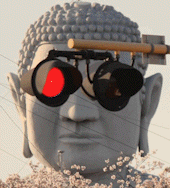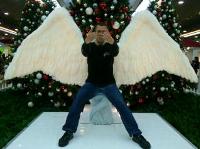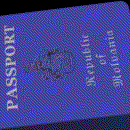| Hot Topics | |
|---|---|
餃子の王将
7 posts
• Page 1 of 1
餃子の王将
One of the first Japanese fast food places I got hooked on when moved here. Been watching the news the last few days of the events surrounding the shacho being found shot and killed in Kyoto...
•I prefer liberty with danger to peace with slavery.•
-

Mike Oxlong - Posts: 6818
- Joined: Wed Oct 20, 2004 5:47 pm
- Location: 古き良き日本
Re: 餃子の王将
Mike Oxlong wrote:...the events surrounding the shacho being found shot and killed in Kyoto...
Japanese Food Company President Found Murdered
Japan - It's A WonderfulRife.blogspot.com | 2013dec21
...Unless someone was upset about being served a bad meal of fried dumplings, or was a disgruntled employee, people are talking about Ohigashi's murder as though it was the work of the Yakuza, Japan's famous and infamous crime syndicate.
Well actually, no one is talking about it being a Yakuza hit, which means it probably was...
...Last month a food scandal involving many hotels and restaurants and food service providers was uncovered - featuring the substitution of lower grade ingredients labeled as higher and more expensive ingredients... but Ohsho was NOT part of that corruption.
Personally, I doubt we'll here more of this story, because if it is a Yakuza hit, the police will want no part of it...
President of 'Gyoza no Ohsho' (aka 餃子の王将) food chain shot dead in Kyoto
mainichi.jp/english...20131219
...Takayuki Ohigashi, 72, president of Ohsho Food Service Corp., was found lying in a parking lot in front of the company's head office in Kyoto's Yamashina Ward just before 7 a.m. and was confirmed dead after being taken to hospital, according to the Kyoto prefectural police.
No clues were immediately known as to the identity of the attacker, who is still at large.
...He it a rule to drive his own car to the head office...
More...
-

Taro Toporific - Posts: 10021532
- Images: 0
- Joined: Tue Sep 10, 2002 2:02 pm
Re: 餃子の王将
Peanut gallery hypothesis here. Gyoza man and the Boat Union guy get clipped towards the end of the year. Kinda like the end of all Godfather movies, where all old business gets taken care of before the next Don takes over. However, fucking with gyoza is like fucking with my emotions...so now it's personal.
-

Iraira - Maezumo
- Posts: 3978
- Joined: Tue Jun 06, 2006 11:22 am
- Location: Sitting across from an obaasan who suffers from gastric reflux.
Re: 餃子の王将
Iraira wrote:Peanut gallery hypothesis here. Gyoza man and the Boat Union guy get clipped towards the end of the year. Kinda like the end of all Godfather movies, where all old business gets taken care of before the next Don takes over. However, fucking with gyoza is like fucking with my emotions...so now it's personal.
Lmfao
So who is big worm?
Sent from my SC-03E using Tapatalk 2
"I thought what I'd do was, I'd pretend I would pull out, but won't."
-

IparryU - Maezumo
- Posts: 4285
- Joined: Thu Jun 04, 2009 11:09 pm
- Location: Balls deep draining out
Re: 餃子の王将
Was Kyoto's 'Gyoza King' shot dead by a Chinese hit man?
http://www.japantoday.com/category/kuch ... se-hit-man
At around 5:45 on the morning of Dec 19. Takayuki Ohigashi, the charismatic, 72-year-old president of Osho Food Service, operator of the Gyoza no Osho restaurant chain, arrived at the usual time at his company headquarters in Kyoto’s Yamashina Ward. He was met by an assailant who fired four small caliber bullets into his torso, killing him.
A newspaper reporter who covered the incident tells Shukan Asahi Geino (Jan 16) that the shooting had all the hallmarks of a professional hit.
Normally in a slaying involving guns, suspicion would automatically fall on the yakuza. But the gun used in the shooting was determined to be a .25 caliber automatic, not the likely choice of a weapon by a syndicate member.
“Colt of the U.S. and Beretta of Italy are best known for this type of handgun, and there are other models manufactured in Belgium,” a gang cadre explains. “We obtain a lot of these via Russia—they are brought in by fishermen on crab boats that visit ports in Hokkaido. But even if yakuza were involved in smuggling the guns, I think the possibility is low that they would use them themselves to kill anyone.”
Another yakuza, a veteran gang head, tells Geino’s reporter why he thinks there’s little likelihood of direct gang involvement in the Ohigashi slaying.
“A .25 caliber bullet is about the size of a peanut—good for intimidation since it can break a window or cause a wound,” he says. “But it’s not for serious jobs. When a yakuza wants to rub somebody out, he’ll use a .38 caliber or something bigger and make sure. And these days they avoid using automatics, which have more problems with maintenance and storage.”
So then, who’s the likely perpetrator in the Ohigashi shooting?
“Back in the old days when the gangs were thriving, I heard stories about hit men who would go overseas to practice their marksmanship,” says the aforementioned gang boss. “A shooter would be trained to avoid looking into the victim’s eyes, which might rattle their nerves, so they always aimed for the body. From what I heard of the Kyoto shooting, that sounds to me like the work of a pro.”
“I guess it was a Chinese hit man,” he adds. “If you pay 1.5 million yen up front to gang “D,” they’ll send somebody to China. It’s not hard to get somebody into the country, and while it’s not that easy to equip him with a ‘tool’ (a gun), they can obtain one from a yakuza easily enough.
“Of course, the shooter would need the cooperation and guidance of some local Japanese. But once the job was done, he would leave the country. His payment for a successful job would come to 1.5 million yen, so the whole thing would run about 3 million.”
Another point that suggests a Chinese perpetrator is that one would likely be adept at use of a small-caliber automatic, as locally made versions of the .30 caliber Tokarev are in widespread use in China.
China has also been linked to a possible motive for the killing.
“In 2005, Gyoza no Osho started doing business in Dalian, Liaoning Province,” says a police source. “That was five years after Ohigashi had taken over as president, and the company was in the process of making a sharp recovery. It currently operates four restaurants there. When the first outlet opened, we heard something about a run-in with local gangsters, at which time Gyoza no Osho asked a Japanese gang to mediate. But Osho balked at paying them for services rendered.”
Could it be, then, that use of a Chinese shooter was the Japanese gang’s idea of revenge?
This scenario, however, was only one of several possibilities raised in the Geino article and in any case the aforementioned news reporter said the police have their work cut out for them.
“If they can’t solve it within one or two months, it could easily turn into cold case, like the murder of that family of four in Setagaya, Tokyo, at the end of December 2000. When a hit man flees abroad, those are the sort of complications you can expect.”
http://www.japantoday.com/category/kuch ... se-hit-man
•I prefer liberty with danger to peace with slavery.•
-

Mike Oxlong - Posts: 6818
- Joined: Wed Oct 20, 2004 5:47 pm
- Location: 古き良き日本
Re: 餃子の王将
Mike Oxlong wrote:Was Kyoto's 'Gyoza King' shot dead by a Chinese hit man?At around 5:45 on the morning of Dec 19. Takayuki Ohigashi, the charismatic, 72-year-old president of Osho Food Service, operator of the Gyoza no Osho restaurant chain, arrived at the usual time at his company headquarters in Kyoto’s Yamashina Ward. He was met by an assailant who fired four small caliber bullets into his torso, killing him.
A newspaper reporter who covered the incident tells Shukan Asahi Geino (Jan 16) that the shooting had all the hallmarks of a professional hit.
Normally in a slaying involving guns, suspicion would automatically fall on the yakuza. But the gun used in the shooting was determined to be a .25 caliber automatic, not the likely choice of a weapon by a syndicate member.
“Colt of the U.S. and Beretta of Italy are best known for this type of handgun, and there are other models manufactured in Belgium,” a gang cadre explains. “We obtain a lot of these via Russia—they are brought in by fishermen on crab boats that visit ports in Hokkaido. But even if yakuza were involved in smuggling the guns, I think the possibility is low that they would use them themselves to kill anyone.”
Another yakuza, a veteran gang head, tells Geino’s reporter why he thinks there’s little likelihood of direct gang involvement in the Ohigashi slaying.
“A .25 caliber bullet is about the size of a peanut—good for intimidation since it can break a window or cause a wound,” he says. “But it’s not for serious jobs. When a yakuza wants to rub somebody out, he’ll use a .38 caliber or something bigger and make sure. And these days they avoid using automatics, which have more problems with maintenance and storage.”
So then, who’s the likely perpetrator in the Ohigashi shooting?
“Back in the old days when the gangs were thriving, I heard stories about hit men who would go overseas to practice their marksmanship,” says the aforementioned gang boss. “A shooter would be trained to avoid looking into the victim’s eyes, which might rattle their nerves, so they always aimed for the body. From what I heard of the Kyoto shooting, that sounds to me like the work of a pro.”
“I guess it was a Chinese hit man,” he adds. “If you pay 1.5 million yen up front to gang “D,” they’ll send somebody to China. It’s not hard to get somebody into the country, and while it’s not that easy to equip him with a ‘tool’ (a gun), they can obtain one from a yakuza easily enough.
“Of course, the shooter would need the cooperation and guidance of some local Japanese. But once the job was done, he would leave the country. His payment for a successful job would come to 1.5 million yen, so the whole thing would run about 3 million.”
Another point that suggests a Chinese perpetrator is that one would likely be adept at use of a small-caliber automatic, as locally made versions of the .30 caliber Tokarev are in widespread use in China.
China has also been linked to a possible motive for the killing.
“In 2005, Gyoza no Osho started doing business in Dalian, Liaoning Province,” says a police source. “That was five years after Ohigashi had taken over as president, and the company was in the process of making a sharp recovery. It currently operates four restaurants there. When the first outlet opened, we heard something about a run-in with local gangsters, at which time Gyoza no Osho asked a Japanese gang to mediate. But Osho balked at paying them for services rendered.”
Could it be, then, that use of a Chinese shooter was the Japanese gang’s idea of revenge?
This scenario, however, was only one of several possibilities raised in the Geino article and in any case the aforementioned news reporter said the police have their work cut out for them.
“If they can’t solve it within one or two months, it could easily turn into cold case, like the murder of that family of four in Setagaya, Tokyo, at the end of December 2000. When a hit man flees abroad, those are the sort of complications you can expect.”
http://www.japantoday.com/category/kuch ... se-hit-man
Make a hit, fly out of the cuntry, and the J-police wash their hands of it...totally logical. Meanwhile all the news shows are showing how many cameras there are now and how it's near impossible to commit a crime and not be caught on several of them...which can also be used to trace you.
-

matsuki - Posts: 16047
- Joined: Wed Feb 02, 2011 4:29 pm
- Location: All Aisu deserves a good bukkake
Re: 餃子の王将
Customers mourning slain dumpling boss to get free food
A Japanese dumpling restaurant chain whose president was gunned down late last year in a reported gangland killing is to give customers food coupons in gratitude for their support.
Takayuki Ohigashi, 72, the boss of the “Gyoza no Ohsho (King of Dumplings)” chain, was shot dead in December outside the company’s headquarters in Kyoto.
A spokesman for the company said sales were up 20% in the weeks after the bloody killing, as customer numbers swelled.
The company will give coupons for dumplings and other dishes to everyone who visits between Thursday and Saturday, it said.
“It is meant to show the company’s gratitude to customers who supported us after the president’s death,” said a company spokesman.
A set of five different coupons will offer free dumplings and various other discounts on food and drinks, valid until Dec 25, the company said.
Ohigashi turned around the once-struggling restaurant chain, which now operates more than 650 restaurants throughout Japan as well as a handful abroad.
Gun crime is rare in Japan, and incidents involving firearms usually have a connection to yakuza crime groups.
Police have so far made no arrests.
•I prefer liberty with danger to peace with slavery.•
-

Mike Oxlong - Posts: 6818
- Joined: Wed Oct 20, 2004 5:47 pm
- Location: 古き良き日本
7 posts
• Page 1 of 1
Who is online
Users browsing this forum: No registered users and 15 guests

